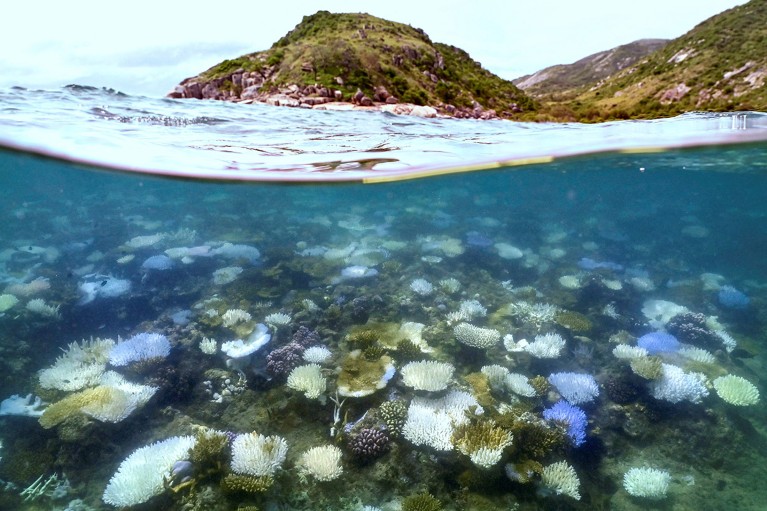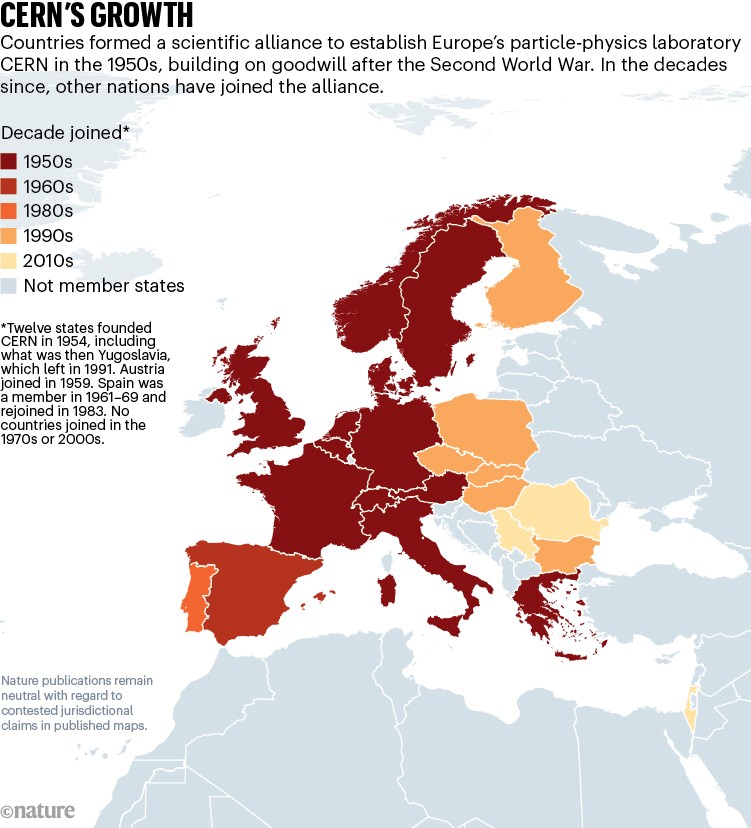[ad_1]
Hello Nature readers, would you like to get this Briefing in your inbox free every day? Sign up here.

The Great Barrier Reef in Australia is undergoing its worst coral-bleaching event on record.Credit: David Gray/AFP via Getty
Australia’s iconic Great Barrier Reef is experiencing its fifth mass bleaching event in eight years — and this one is the worst on record. A report by the Australian government’s reef management agency analysed aerial surveys of 1,080 of the reef’s estimated 3,000 individual reefs, and some in-water surveys. Corals ‘bleach’ when stressed by warming waters brought on by climate change, expelling their colourful resident zooxanthellae. Marine biologist Terry Hughes says the solution to the bleaching problem is clear: “Reduce greenhouse gas emissions. Full stop.”
The laboratory stalwart Caenorhabditis elegans forgets new information a couple of hours after learning it — unless it is quickly put on ice. Worms trained to dislike a smell retained their aversion while chilled for many hours. Worms given lithium also hung onto their memories for longer than normal. “Why do they forget, when the worms are perfectly capable of maintaining the memories longer?” ponders geneticist and study co-author Oded Rechavi. “Perhaps there’s a reason for holding memories for the particular duration that they do.”
Reference: bioRxiv preprint (not peer reviewed)
Hopes that the James Webb Space Telescope (JWST) would finally settle the debate over how fast the Universe is expanding were dashed after two teams that used JWST data calculated different values. Observations of the current Universe typically find the expansion rate — the Hubble constant — to be about 9% faster than predictions based on early-Universe data. Multiple techniques will need to agree before the disparity is resolved, says astronomer Wendy Freedman.
The top ten papers most-cited in policy documents worldwide are dominated by economics research: the number one most-referenced, with around 1,300 citations, is a 2003 study about the impact of trade. A list that excludes economics is topped by a 1990 book on the evolution of institutions by Nobel laureate Elinor Ostrom and a 1997 paper about Earth’s natural capital. Paediatrician Peter Gluckman, former chief science adviser to New Zealand’s prime minister, is not surprised that the list includes broad-brush papers rather than those reporting incremental advances. “The thing that worries me most is the age of the papers that are involved,” he says — more recent work on climate change, food security and similar areas hasn’t made it onto the list.
Features & opinion
A coalition of scientists has published a declaration that there is “a realistic possibility of conscious experience” in all vertebrates and in many invertebrates, such as octopuses and insects. The group focuses on sentience — an aspect of consciousness often defined as being able to have subjective experiences — pointing to research suggesting that octopuses feel pain and that bees show play behaviour. “When there is a realistic possibility of conscious experience in an animal, it is irresponsible to ignore that possibility in decisions affecting that animal,” says the declaration.
Reference: The New York Declaration on Animal Consciousness
Some people experience intense visual imagery, called hyperphantasia, that means they can replay memories or imagine scenes that are as vivid as real life. Once thought to be rare, research now suggests as many as 1 in 30 people have such vivid imaginations. At the other end of the spectrum are people with ‘aphantasia’, who have no visual imagery at all. Science is just catching up with this neurodiversity and how it influences memory, childhood, and even mental health.
To identify where you lie on the hyperphantasia/aphantasia spectrum, try the Vividness of Visual Imagery Questionnaire.
Physicists are finally getting to grips with the mysterious strong force, which binds quarks into protons and neutrons and holds the nucleus together. The physicists who made the first measurements in the range of distances where the strong force becomes especially strong and difficult to calculate, and came up with theoretical predictions to match, describe their breakthrough. We at last have the ability to calculate aspects of quantum chromodynamics — the fiendishly complex theory that describes how the force works — from first principles, write Alexandre Deur, Stanley Brodsky and Craig Roberts. It could lead to progress on a unifying theory of the universe and help us discover how many dimensions exist.
Scientific American | 12 min read
Infographic of the week

Source: CERN
As CERN, Europe’s particle-physics laboratory, celebrates its 70th anniversary this year, researchers argue that its impact goes beyond its 23 member states and discoveries in particle physics. Advances made at CERN, including the development of the World Wide Web, have affected society as a whole. “I think it is a great model for international collaboration,” says physicist Rainer Wallny. “It has a lot of facilities available that are beyond the scope of individual user groups. No one has a particle accelerator in their backyard.” (Nature | 9 min read)
On Friday, Leif Penguinson was visiting the ‘Where I Work’ photography exhibition near the Nature offices in London. Did you find the penguin? When you’re ready, here’s the answer.
Thanks for reading,
Flora Graham, senior editor, Nature Briefing
With contributions by Katrina Krämer, Smriti Mallapaty and Sarah Tomlin
Want more? Sign up to our other free Nature Briefing newsletters:
• Nature Briefing: Microbiology — the most abundant living entities on our planet — microorganisms — and the role they play in health, the environment and food systems.
• Nature Briefing: Anthropocene — climate change, biodiversity, sustainability and geoengineering
• Nature Briefing: AI & Robotics — 100% written by humans, of course
• Nature Briefing: Cancer — a weekly newsletter written with cancer researchers in mind
• Nature Briefing: Translational Research — covers biotechnology, drug discovery and pharma
[ad_2]
Source Article Link


